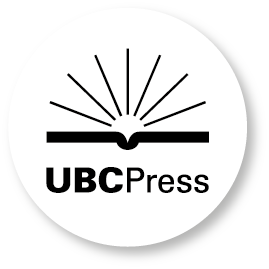The University of Arizona Press is the premier publisher of academic, regional, and literary works in the state of Arizona. They disseminate ideas and knowledge of lasting value that enrich understanding, inspire curiosity, and enlighten readers. They advance the University of Arizona’s mission by connecting scholarship and creative expression to readers worldwide.
Ancient Light
Poems
Ancient Light is a timely and innovative collection by renowned Anishinaabe poet Kimberly Blaeser. It looks squarely at pressing social issues of our time while simultaneously invoking Indigenous pathways of kinship, healing, and renewal.
When Language Broke Open
An Anthology of Queer and Trans Black Writers of Latin American Descent
This collection of creative offerings by forty-three queer and trans Black writers of Latin American descent helps illustrate Blackness as a geopolitical experience that is always changing. In centering the multifaceted realities of the LGBTQ community, the anthology's contributors challenge everything we think we know about gender, sexuality, race, and what it means to experience a livable life.
Light As Light
Poems
Light As Light is acclaimed poet Simon J. Ortiz’s first collection in twenty years. The poems in this volume are a powerful journey through the poet’s life—both a love letter to the future, and a sentimental, authentic celebration of the past.
Ordinary Injustice
Rascuache Lawyering and the Anatomy of a Criminal Case
Ordinary Injustice shows how the legal and judicial system is stacked against Latinos, documenting the racial inequities in the system from the time of arrest and incarceration to final deposition and post-conviction experiences. The book chronicles the obstacles and injustices faced by a young Latino student with no previous criminal record and how a simple misdemeanor domestic violence case morphed into a very serious case with multiple felonies, and potential life sentence without the possibility of parole.
Hottest of the Hotspots
The Rise of Eco-precarious Conservation Labor in Madagascar
Continually recognized as one of the “hottest” of all the world’s biodiversity hotspots, the island of Madagascar has become ground zero for the most intensive market-based conservation interventions on Earth. This book details the rollout of market conservation programs, including the finding drugs from nature—or “bioprospecting”—biodiversity offsetting, and the selling of blue carbon credits from mangroves. It documents the tensions that exist at the local level and provides a voice for community workers many times left out of environmental policy discussions, ultimately in the hope of offering critiques that build better conservation interventions with perspectives of the locals.
From the Skin
Defending Indigenous Nations Using Theory and Praxis
In this edited volume, J. Jeffery Clark and Elise Boxer deploy the term practitioner-theorist to describe Indigenous studies graduates who theorize, produce, and apply knowledge within and between their nations and academia.
Central American Migrations in the Twenty-First Century
Central American Migrations in the Twenty-First Century tackles head-on the way Central America has been portrayed as a region profoundly marked by the migration of its people. The essays use an intersectional approach to demonstrate the complexity of the migration experience. This volume opens a dialogue between humanities and social sciences scholars on the complex migratory processes of the region.
Ready Player Juan
Latinx Masculinities and Stereotypes in Video Games
This book fuses Latinx studies and video game studies to document how Latinx masculinities are portrayed in high-budget action-adventure video games. Developing an original approach to video game experiences, the author theorizes video games as border crossings, and defines a new concept—digital mestizaje—that pushes players, readers, and scholars to deploy a Latinx way of seeing constructive as well as destructive qualities.
Landscapes and Social Transformations on the Northwest Coast
Colonial Encounters in the Fraser Valley
Construction of Maya Space
Causeways, Walls, and Open Areas from Ancient to Modern Times
This volume focuses on how powerful people of the ancient, historical, and contemporary periods in the Maya world used features such as walls, roads, rails, and symbolic boundaries to control those without power—and how the powerless pushed back.
Our Hidden Landscapes
Indigenous Stone Ceremonial Sites in Eastern North America
Our Hidden Landscapes introduces people to eastern North America’s Indigenous ceremonial stone landscapes (CSLs)—sacred sites whose principal identifying characteristics are built stone structures that cluster within specific physical landscapes. This volume presents these often unrecognized sites as significant cultural landscapes in need of protection and preservation. Chapters from Indigenous community members, archaeologists, and anthropologists provide a variety of approaches for better understanding, protecting, and preserving these important sacred spaces.
Nihikéyah
Navajo Homeland
This anthology of essays offers Diné perspectives on the experiences, observations, and examinations of their homeland. Together, the contributors thoughtfully illustrate the complex state of nihikéyah, “our land,” as viewed by Diné people.
Living and Leaving
A Social History of Regional Depopulation in Thirteenth-Century Mesa Verde
In the Arms of Saguaros
Iconography of the Giant Cactus
In the Arms of Saguaros pictures how nature’s sharpest curves became a symbol of the American West. From the botanical explorers of the nineteenth century to the tourism boosters in our own time, saguaros and their images have fulfilled attention-getting needs and expectations.
Bringing Home the Wild
A Riparian Garden in a Southwest City
Bringing Home the Wild follows a two-decade journey in ecologically guided urban gardening on a four-acre irrigated parcel in Phoenix, Arizona, from the perspective of a retired botanist and her science historian partner. Through humor and a playful use of language, the book not only introduces the plants who are feeding them, buffering the climate, and elevating their moods but also acknowledges the animals and fungi who are pollinating the plants and recycling the waste. This work shows all of us the importance of observing, appreciating, and learning from the ecosystems of which we are a part.











